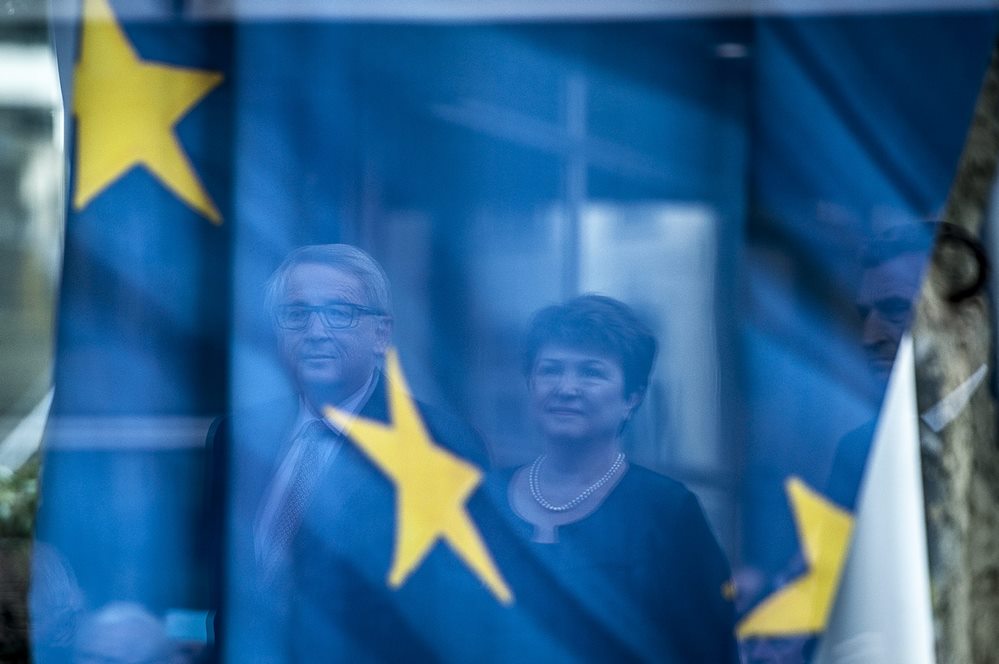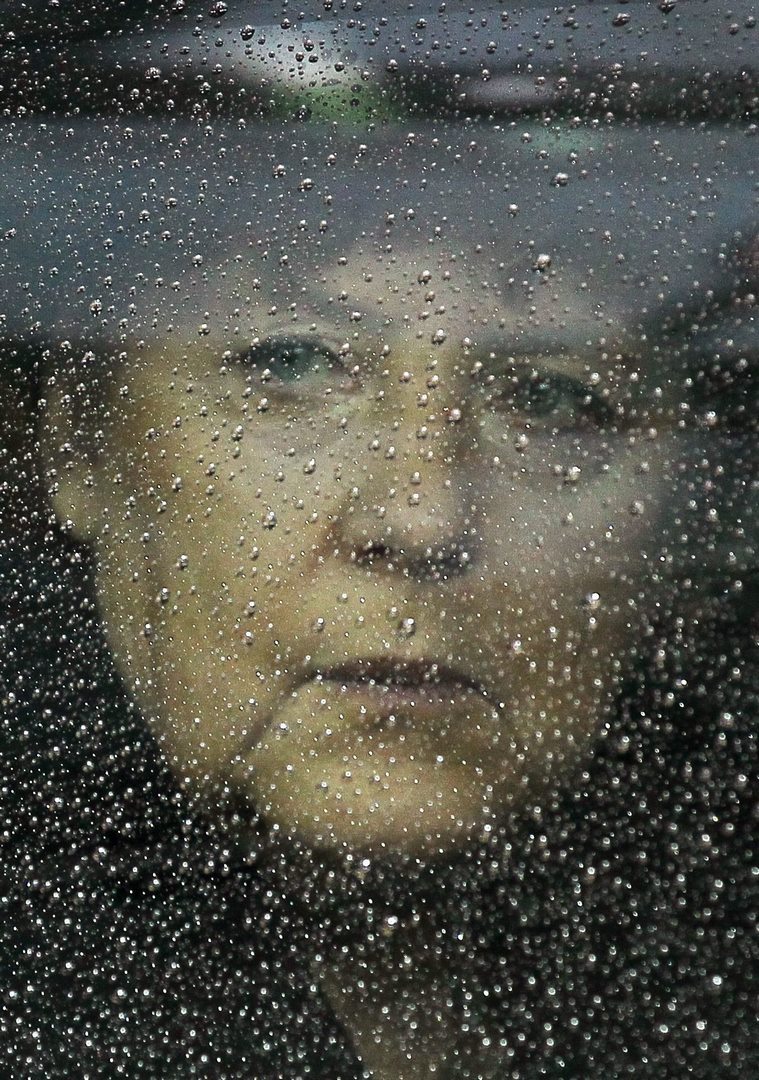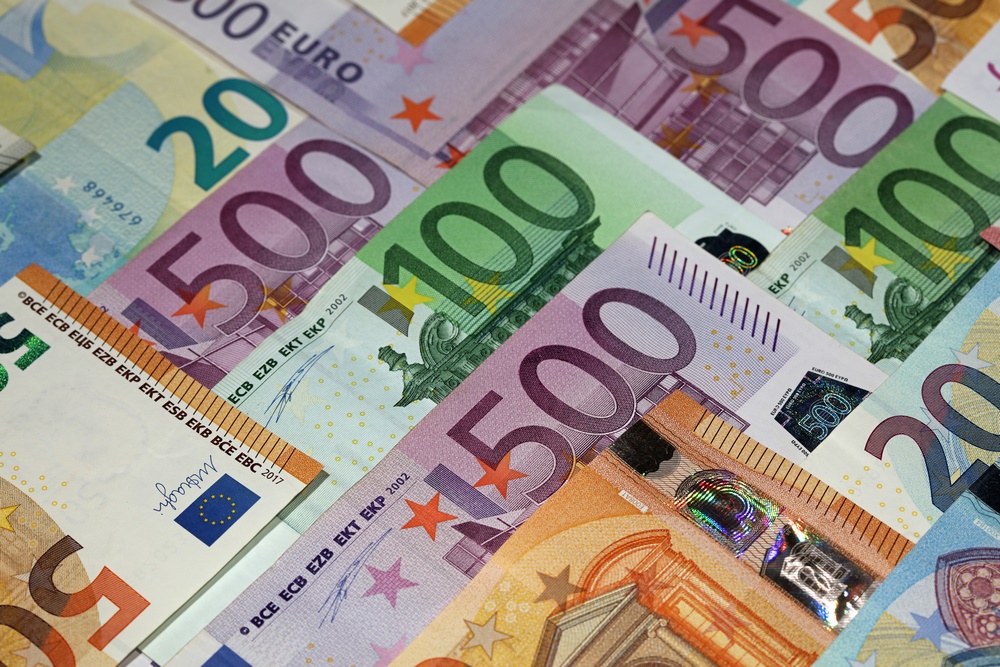THE WARSAW INSTITUTE REVIEW
Date: 26 June 2017 Author: Grzegorz Górski, PHD
Changes in the Design of the EU Budget after Brexit, the New Financial Outlook for 2021-2027 and Consequences for Local Self-government
In 2020, decisions will be made by the relevant bodies of the European Union, which will sanction its financial outlook for the years 2021-2027. The organization’s annual budgets will be constructed over the next seven years based on this framework.

In recent months, the European public has received a variety of information on the direction of work on this new financial outlook. Already at this stage, from the Polish perspective, it must raise the utmost concern. In this context, it seems that attempts by the European Commission to exert pressure on Poland are becoming easier to understand. The European Commission first struck out at Poland under the guise of the “defense of democratic values”, an argument used exclusively in a clear attempt to reverse democratic electoral decisions in Poland through outside interference. Next, the European Commission launched further procedures under the pretext of bringing countries to heel (besides Poland, Hungary and the Czech Republic also became victims of this action) that were allegedly boycotting the EU mechanism of migrant relocation. Without delving too deeply at this point into the analysis of these two games being played by the European Commission, it must be said that the real reason for these actions is an attempt to lay the groundwork for radically reducing the financial benefits that Poland has thus far received from EU membership. Faced with the mounting budgetary problems of the Union, the simplest solution is to save money at the expense of the largest beneficiary of the EU.
Returning to the issue of the intentions of Brussels in the fundamental reconstruction of the budgetary principles of the European Union, two serious facts should be taken into consideration.
In first place is the report of the so-called “Mario Monti Commission”.[1] Several months ago, this document formulated the basic direction of changes in the new EU financial framework. Further expansion and next steps are being taken through the pronouncements in recent weeks of the new European Commissioner for Budget and Human Resources, Gunther Oettinger.[2]
In both cases, the authors of the positions point to the fact that the proposed solutions being prepared will be a serious threat to Poland’s current position. Next to France, Poland is the largest recipient of EU funds. While in the case of France these are funds received under the Common Agricultural Policy (CAP), for Poland, they also include resources from the Structural Funds and the Cohesion Fund. It’s easy to imagine, that by looking for ways to make the necessary savings, the suggested changes will lead to a radical reduction in the financial benefits of Poland’s membership in the EU, by changing the way money is spent in the area most critical to Poland.
Before we move on, it is necessary first to summarize the current financial benefits to Poland from our presence in the EU.
Financial flows to Poland in 2004-2016
Poland officially entered the European Union on May 1, 2004. From that moment on, it became a full-fledged participant in the formulation of the organization’s budget.
Starting from that point, until the end of 2016, Poland received over 135.72 billion EUR (600 billion PLN) from the EU budget.[3] At the same time, Poland’s contribution to the budget amounted to over 44.47 billion EUR (190 billion PLN). The balance of cash flows for this period was less than 91.1 billion EUR, which is around 400 billion PLN. That means that the average annual support for Poland is 7 billion EUR (30 billion PLN).
In relation to our national budget, this represents roughly 10% of annual revenue, and corresponds to approximately the annual forecast CIT (corporate income tax) in 2017. The total amount of EU funding is slightly higher than the planned national budget of 2017.
On average, it can be said that Poland received about two annual national budgets from the European Union over approximately 12 years. Not to underestimate the importance of these measures, it must be stated, however, that it’s difficult to characterize the scale of these financial benefits as an epochal and pivotal moment in Poland’s civilizational development.
It should also be pointed out that the largest contributions from the EU budget relate to expenditures:
- for the Common Agricultural Policy (about 46.5 billion EUR in the indicated period, i.e. 210 billion PLN, or 16 billion PLN annually);
- on the Cohesion Policy (over 27.1 billion EUR, i.e. 115 billion PLN, or 8.8 billion PLN annually) and
- on Structural Funds (over 55.4 billion EUR, i.e. 240 billion PLN, or 18.5 billion PLN annually).

By adjusting the aforementioned amounts by the coefficient resulting from our contributions to the Union’s budget, the above items should be reduced by approximately 25%, which means that in real terms, annually they are actually:
- 12 billion PLN for the Agricultural Policy,
- 6.6 billion PLN for the Cohesion Policy and
- 14 billion PLN for Structural Funds.
Without entering into a more detailed analysis, it can be reiterated that, in real terms, these amounts are not overwhelming and certainly do not correspond to the popular, but largely mythological (or rather propagandistic) idea of the “stream of money flowing from Brussels”. They certainly played a role in spurring a number of areas of life in Poland, but these funds aren’t equal to various expenditures of the national budget, and can’t be conclusively regarded as a breakthrough factor for our country.
It should also be kept in mind that these averaged parameters had different dimensions depending on the year. In this way, it can also be said that the measures used in certain funding waves did not uniformly influence the harmonious civilizational progress of Poland.
In addition, it is important to be aware that since 2008, as the main beneficiaries of the Union, our contribution, created primarily as a percentage of GDP, has grown disproportionately faster. The economic stagnation in EU countries, which began in 2008-2009, with a relatively high GDP growth rate in Poland, has led to a progressive reduction in Poland’s real “return” from the EU budget.[4]
Brexit, the EU institutional crisis and the new financial outlook
Great Britain is a net payer into the EU budget. This contribution amounts to 12 billion EUR per year, almost twice the annual average “yield” for Poland. These funds will certainly not be in the budget as early as 2021. It can’t be excluded that problems will appear even sooner. The open attempt by major Western countries (Germany, France, Italy, Spain and the Benelux Union) to “punish” Great Britain for Brexit, which also serves as a kind of warning for potential imitators, may lead to a very hard breakup. And it will consequently mean a catastrophe for the Union’s budgets as soon as 2019 and 2020. If this happens, very serious effects will be felt even sooner in Poland. Poland’s focus on securing the social rights for Poles seeking to stay in Britain after Brexit is, in essence, a marginal issue in relation to the scale of the financial consequences of that country’s withdrawal from the EU.
It must also be kept in mind that in the work on the new financial outlook of the EU, Great Britain will no longer be taken into account. What does this mean for Poland? It’s not just a matter of the departure of a country which was a huge net payer into the common budget. Great Britain, a very rich country with a powerful economy, clearly drew the EU average upwards in all economic indicators. The exit of Great Britain will cause a very serious reduction of these averages. At the same time, the growth of Poland’s GDP and other parameters, against the background of stagnation in other leading countries, will automatically bring Poland closer to these EU averages. Poland will move very close to the position of an EU “average joe”. It is, however, a function not so much of the real progress of Poland, but of the aforementioned merciless mathematics. A country’s place in this informal EU ranking directly influences the decision-making process for the allocation of resources from the Structural Funds and Cohesion Fund. It seems that it is precisely the awareness of these consequences of Brexit among the Brussels bureaucracy,
But this is not the only critical issue we face. The gigantic migration problem, caused by Germany’s carelessness, makes it necessary to immediately increase the financial outlay against the resulting turbulence. Look at the huge costs of the As a result, the costs of discharging the critical situation in Syria, Jordan and Lebanon will inevitably also increase. Without these actions, there is little chance chance of putting a brake on the growing scale of the migration crisis. There will also be an increase in the cost of adaptation policies for hundreds of thousands, and soon enough, millions of migrants in the EU itself.
Already today, it is estimated that the cost of this policy will be, in modest estimation, a minimum of 10 billion EUR per year. After all, this does not include all the outlays on other elements proclaimed as a priority like common defense and security policy. This in particular concerns the protection of the EU’s external borders, which requires a huge amount of funding.
This means that for just these two reasons, namely Brexit and the migration crisis, there will be a need to either supplement the budget by an additional 25 billion EUR per year from 2021, or cut spending by that amount to shift the saved funds to new priorities. In addition, assuming that negotiations with the United Kingdom end badly, it will lead to a comparable gap in 2019-2020.
Already today, as mentioned earlier, Commissioner Oettinger has stated openly that finding such a huge amount of money can only happen by limiting spending in two spheres — in the Cohesion Policy and Structural Funds, and the Common Agricultural Policy, which together cover more than 70% of EU spending. It is clear that the margin of freedom under the CAP revision is extremely limited,[5] which, consequently, means that the cuts will have to come at the expense of Structural Funds and the Cohesion Policy, because it is rather difficult to imagine the consent of the Union’s main contributors to an even greater increase in benefits from the common budget. It also does not appear to be possible for all members of the Union to be allowed to introduce taxes to directly feed the budget of Brussels, because this solution would result in practically the total alienation of this center from any control by national governments.
But that is not all. Even within the confines of the Cohesion Policy and Structural Funds, significant changes are being proposed in the way they are spent, especially relevant to Poland. First of all, this includes increasing spending on fighting unemployment, which mainly affects Mediterranean countries. Fortunately, Poland has this problem behind it, at least for the time being, but it actually means further limiting EU funds for . In addition, it has been suggested that more funds be shifted to economic innovation and research. And in the use of these resources we remain outsiders and there is no significant improvement expected. Our scientific centers are entirely incapable of utilizing these funds, and none of the proposed solutions in Poland bring us closer to increasing these capabilities.
Consequences for Poland
It is clear today that there is little chance to maintain comparable financial benefits for Poland based on the forthcoming outlook of the EU budget. We would not be mistaken to assume that in the coming years, starting at the latest from 2021 (and unfortunately, maybe earlier) the net transfer of funds for Poland will oscillate around a relative equilibrium.[6]

We don’t know which direction the possible evolution of the CAP will take. However, given the various aspects of the ongoing debate, we can assume with great certainty that it will proceed in an even worse direction for Poland than the present situation. And it must be remembered that today, Polish farmers receive only two-thirds of the amount received by French, German or Italian farmers and half of what Belgian or Dutch farmers receive. This creates a situation that systematically restricts fair competition in the EU agricultural market and discriminates against Polish agriculture, under the guise of partial support. There can be no doubt as to what Poland and Polish agriculture would look like if Polish farmers received subsidies at the level of German farmers, and what the EU food market would look like if there was a level playing field for all countries.
However, if we omit the subsidies from the CAP, then Poland will in all likelihood become a net financial payer into the EU budget in this new financial era. It seems that the awareness of this state of affairs is completely unnoticed in Poland today.
We should emphasize that the proposed changes in the structure of EU spending will also drastically reduce the funds for regional policy that aims to equalize the standard the standard of living in various parts of Europe. Conducting this policy was one of the flagship undertakings of the European Union since its inception. From the Polish perspective, it was treated as a sort of compensation for cutting us off from the Marshall Plan, thanks to which the countries of Western Europe lifted themselves from the effects of World War II. We therefore have the right to treat the Cohesion Fund as a sort of redress for the effects of the war, from those that caused it (Germany, Italy and Austria), or those who, to a greater or lesser degree, collaborated with them (France, Belgium, Netherlands, Sweden, Denmark, Spain or Portugal), and despite this, benefited from American support.
There is one more important element relating to the Structural Funds. The claim made by certain European leaders, headed by Germany, that the funds transferred to Poland (among other countries) are an expression of their benevolence, is the pinnacle of cynicism. Since Poland’s association with the Union in 1991, these funds have been handed over to us solely as a form of opening up our market to unequal competition with European companies. Taking advantage of their upper hand at that time, often with the tremendous support of their own governments, they literally colonized Poland, gaining a disproportionate advantage over Polish companies in European markets. Forgetting that the small Polish market has become one of the four main consumers of European exports today, delicately speaking, is incredulous.
However, while looking at the formulated proposals for the new structure and preferences of resources under the Cohesion Policy and Structural Funds, it must be stated that from the perspective of the needs of Polish provinces, constructed mainly for the implementation of the Cohesion Policy based on EU funds, bluntly stated, will result in systematic disaster
It is easy to predict that all these actions will result in a drastic reduction of funds available to Polish territorial self-government. The particular prosperity of past years is certainly behind us and it will be necessary to create such systemic and financial solutions in order to generate the necessary development funds. Expecting that their problems will be solved by means of EU funds is not rational in light of the presented information. Today, we have to look for completely new solutions.
Against this background, two issues are worth considering. First of all, the question arises whether this radical change in our financial relations with the EU will be accompanied by a change in the attitude of Poles towards the presence of Poland in this organization. If it is possible to draw conclusions from earlier changes in the attitude of Poles to replacing the złoty with the euro, then we can expect that at the beginning of the 2020s, the overwhelming majority of Poles will want Poland to leave the EU.[7] Poles have a pragmatic attitude towards the euro and the European Union. The lack of real benefits of being in the EU will lead to a radical change in attitudes towards it. This is not unusual, as the attitude of most European nations to the European Union evolves in a similar way, with a close dependence on the real benefits to their nations from belonging to the EU. The Germans are of course the exception, for whom the euro and the Union are tools to achieve their hegemonic dreams.

Secondly, in light of the above projections, attempts to blackmail Poland with the reduction of benefits from the EU budget This threat, in the context of the real budgetary problems of the Union, is becoming more understandable as it can be one of the tools to generate savings at the expense of Poland and to allocate them to new priorities.
Poland is becoming aware of the changing situation, but can acquire entirely new opportunities in the ongoing negotiations with the European Commission. Bearing in mind that the annual EU budgets need unanimous support from the European Council, we should move on to more decisive action to influence the finances of this organization in the very difficult period ahead. Since Poland has at most two to three years of limited, but still real benefits from its presence in the European Union, it is best to exploit them as effectively as possible.
[1] For the full text of the report of the Mario Monti group see: http://ec.europa.eu/budget/mff/hlgor/library/reports-communication/hlgor-report_20170104.pdf. In addition to identifying new sources of EU revenue, the team also calls for the concentration of spending on strengthening the single market and the technological progress of EU economies, in order to make its budget more independent of member state contributions.
[2] The new budget commissioner presented his first proposals which went in the same direction as the ideas presented by the Monti group in early 2017: http://www.bankier.pl/news/new-company-eu-ds-budzetu’sreform-EU-financial-7492730.html.
[3] For the conversion of the euro (EUR) against the Polish złoty (PLN) I use the rate of 4.3 PLN per EUR. This averaging facilitates the presentation of the issues at hand.
[4] All data published on the website of the Ministry of Finance: http://www.mf.gov.pl/c/document_library/get_file?uuid=09c8b121-0a19-4960-a331-145bd2340f42&groupId=764034
[5] After the elections in France, it can be said with great certainty that major changes in agricultural policy will not take place. France, as the largest beneficiary of this construct, in the absence of the largest EU opponent of the CAP, the UK, will certainly not allow any major revisions to this program, which absorbs half of the EU budget.
[6] It is characteristic that even today we see systemic restrictions on the use of these resources. For example, the balance of transfer of these funds in April 2017 amounted to only 80 million EUR, which means that the monthly net impact to Poland fell in 2017 to barely 6 billion EUR. http://www.mf.gov.pl/c/document_library/get_file?uuid=90d98cf8-1201-4422-b9b2-b21c65640fb5&groupId=764034
[7] An April 7 CBOS survey yielded data showing that only 22% of Poles support the introduction of the euro. In 2002 it was 64%. In the same study, a record 88% of Poles supported Poland’s membership in the EU http://wyborcza.pl/7,75398,21703900,nowy-sondaz-cbos-polacy-chca-unii-europejskie-ale-nie-euro.html
All texts published by the Warsaw Institute Foundation may be disseminated on the condition that their origin is credited. Images may not be used without permission.











